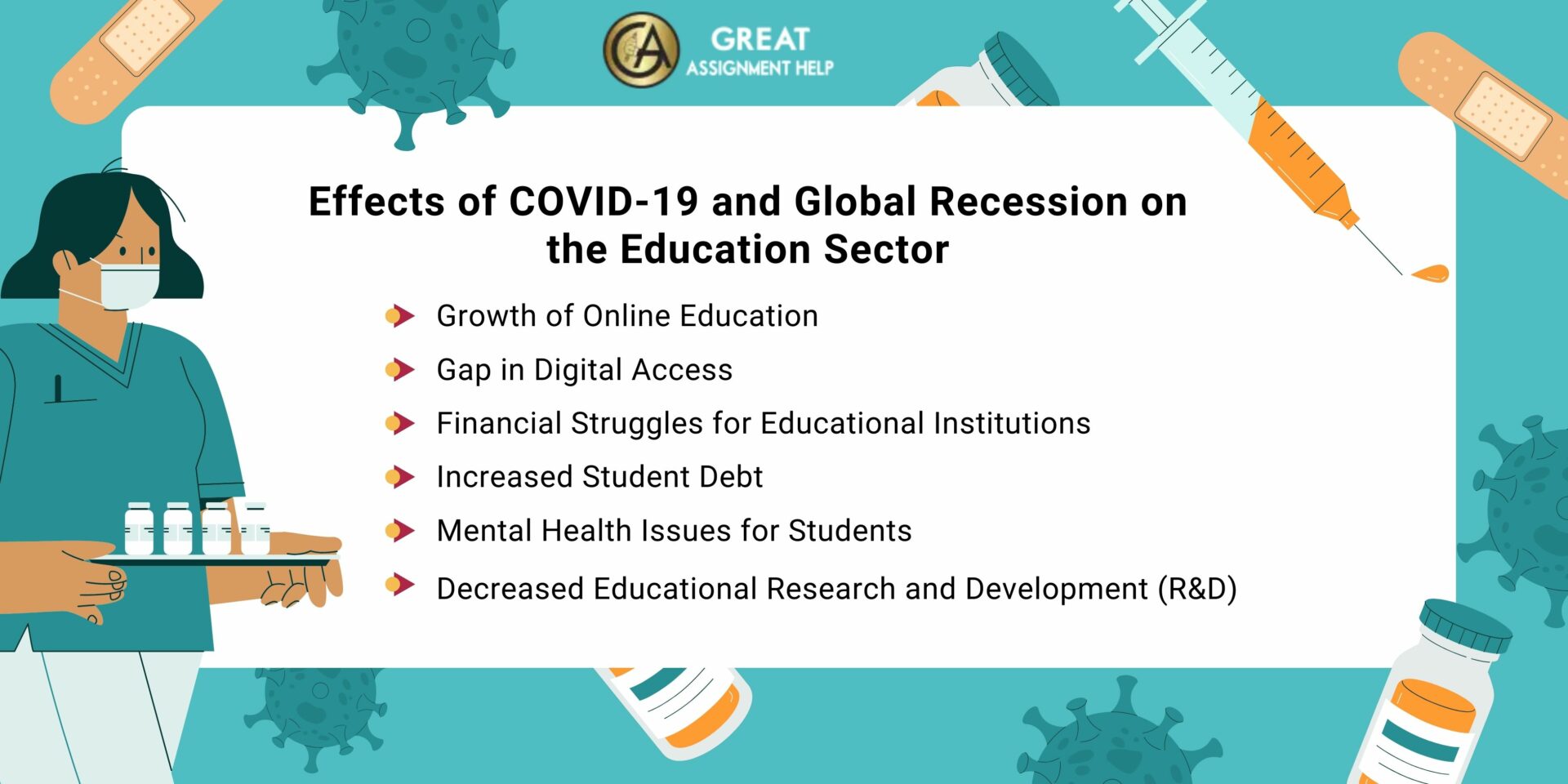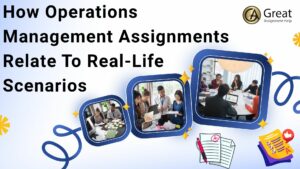The COVID-19 pandemic was a major health crisis that also affected the global economy. Mainly, because of this economic slowdown, almost every industry, including education, was hurt. Education is crucial for any economy. However, the educational institutions faced big challenges like job losses, budget reductions, lockdowns, and a shift to online learning. Overall, the pandemic led to a global recession and ended up in creating a direct impact on students’ learning experiences. If you want to know more about how COVID-19 and the global recession affected the education sector, read this blog. Here, we have also suggested some strategies to rebuild the education sector after the pandemic and economic downturn.
How Did COVID-19 Cause the Global Recession?
One of the biggest economic slowdowns in history was caused by the COVID-19 pandemic. Some major factors that contributed to the global recession are supply chain disruptions, financial uncertainty, massive job losses across industries, less consumer spending due to unemployment, and strict lockdowns that stopped economic activities.
According to the World Bank, the global economy declined by 3.5% in 2020 due to the COVID pandemic. This was one of the worst recessions ever. Many businesses closed permanently, while others struggled to stay open due to reduced investments and unstable finances. This global recession affected some sectors, such as travel, hotels, and retail. But among all sectors, education was severely impacted due to this economic crisis.
How Did COVID-19 Affect the Education Sector?
The COVID-19 pandemic has hurt the education sector in several ways. Here, let us see some of the ways it was affected
- Governments have reduced funding for public education. This made it harder for schools to operate.
- Students took on more debt to finance their education.
- Schools and universities spent more money to adapt to online learning.
- Only a few international students enrolled in courses. This significantly affected university finances.
- As economies recovered slowly, the future of education was uncertain. Hence, universities and policymakers needed to adjust to the new situation.
Effects of COVID-19 and Global Recession on the Education Sector

COVID-19 disrupted students’ learning, and the global recession hurt the education system. Here, let us look at the impact created by COVID-19 and the global recession on the education sector.
Growth of Online Education
COVID-19 caused a big change in education. Due to lockdown restrictions, schools and colleges had to quickly move from traditional classes to online learning. Mainly, to conduct online classes, educational institutions across the world started using platforms like Zoom, Google Classroom, and Microsoft Teams. But this change was not easy for everyone. Many students found it hard to adjust to online classes. However, some students have effectively managed this situation by simply sending a ‘Take My Online Class for Me’ request to experts for online class help.
Gap in Digital Access
Students from poor backgrounds struggled to get the devices and internet they needed for online classes. They often did not have a quiet place to study either. This created a big gap between students who had access to online learning and those who did not. According to UNESCO, over 1.6 billion students were affected when schools closed, and many in poor countries couldn’t access online classes. This made it even harder for disadvantaged students to keep up with their education.
Financial Struggles for Educational Institutions
The economic downturn caused by the pandemic hurt public schools and universities financially. Many institutions were forced to reduce their budgets, lay off staff, or even close down. Some parents couldn’t afford private school fees due to job losses. As a result, enrollment dropped. Schools also lacked the funds to invest in important things like online learning tools, teacher training, and cybersecurity. This made it harder for them to provide quality education to students.
Increased Student Debt
Many families experienced financial struggles. Therefore, it was tough for students to afford higher education. Even when families were struggling, tuition fees remained high. This led to rising student debts. As a result, some students had to drop out of school to help support their families. This was especially too hard in poor countries where education costs were already a burden. Overall, the financial strain made it difficult for many students to continue their studies.
Mental Health Issues for Students
The pandemic had a great impact on students’ mental health. Many students felt stressed, anxious, and uncertain about their future. Moreover, it was hard for students to adjust to online classes and understand the lessons. Besides that, financial worries and isolation from friends and classmates also spoiled the mental peace of students. All of this combined made life extremely tough for students.
Decreased Educational Research and Development (R&D)
Universities play a key role in driving innovation and research. But due to the pandemic and economic slowdown, many had to cut their research budgets. This affected students who wanted to pursue careers in science, technology, and research. There were fewer opportunities for hands-on research, and funding for grants, fellowships, and scholarships also decreased. As a result, students from low-income families found it even harder to access higher education.
How to Rebuild the Education Sector Post-Pandemic
The pandemic and recession were tough, but they also provided a chance to improve the education system. With that opportunity, educational institutions and students can make positive changes and plan for a better future. The following are some important strategies that will help the education sector recover and grow
Invest in Digital Tools
The governments and educational institutions should invest in digital tools to make education accessible to all and bridge the technology gap. This can be done by providing students with devices like laptops or tablets, online resources, and affordable internet.
Follow Flexible Learning Models
The combination of offline and online classes, also known as blended learning, is the newest education approach. Specifically, this hybrid approach will offer more flexibility and can cater to the different learning styles of students. Furthermore, it can reach a broader audience and make education more accessible to students worldwide.
Offer Financial Help for Students
Governments and banks can help students by making education loans more affordable. Particularly, this can be done by lowering interest rates, so students don’t have to pay back as much. In general, offering more scholarships will help students cover the study costs. Moreover, by setting up emergency funds, they can also support students who are struggling financially.
Conduct Mental Health Programs
Educational institutions should support students’ mental health by offering counseling services or conducting workshops, and peer support programs. Especially, with these resources, both students and teachers can manage their stress and anxiety. This, in turn, can lead to the creation of a healthy learning environment.
Develop Public-Private Partnerships
To improve education, governments, private companies, and non-profit organizations should work together. Usually, digital tools will make learning better for students and teaching easier for instructors. Therefore, to develop affordable digital tools, EdTech companies can team up with governments. Especially, by collaborating, they can make quality education more accessible to everyone.
The Bottom Line
COVID-19 and the global recession had a big impact on the education sector. Even though challenges like the digital divide, financial struggles, and mental health concerns remain, they also bring opportunities for improvement. Therefore, with those chances, an inclusive and accessible education system can be developed. If you are a student struggling to manage your time in attending online classes, then you can hire an online class helper from our platform to effectively complete your coursework. Furthermore, you can also approach the subject experts in our team for high-quality assignment help online on any subject. With the guidance of our professionals, you can accurately finish all your tasks on time and excel in academics.



